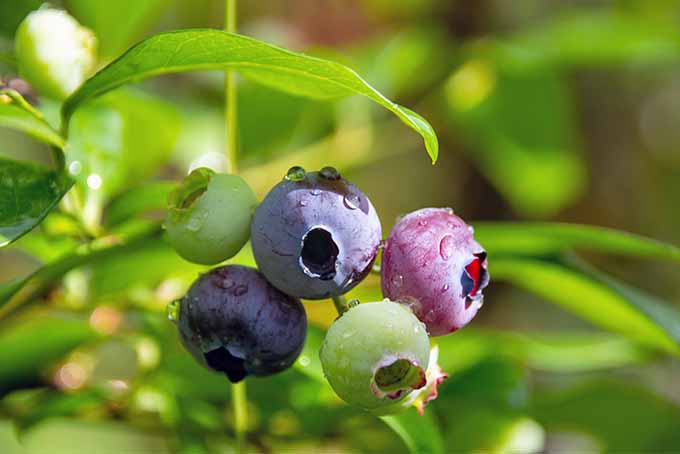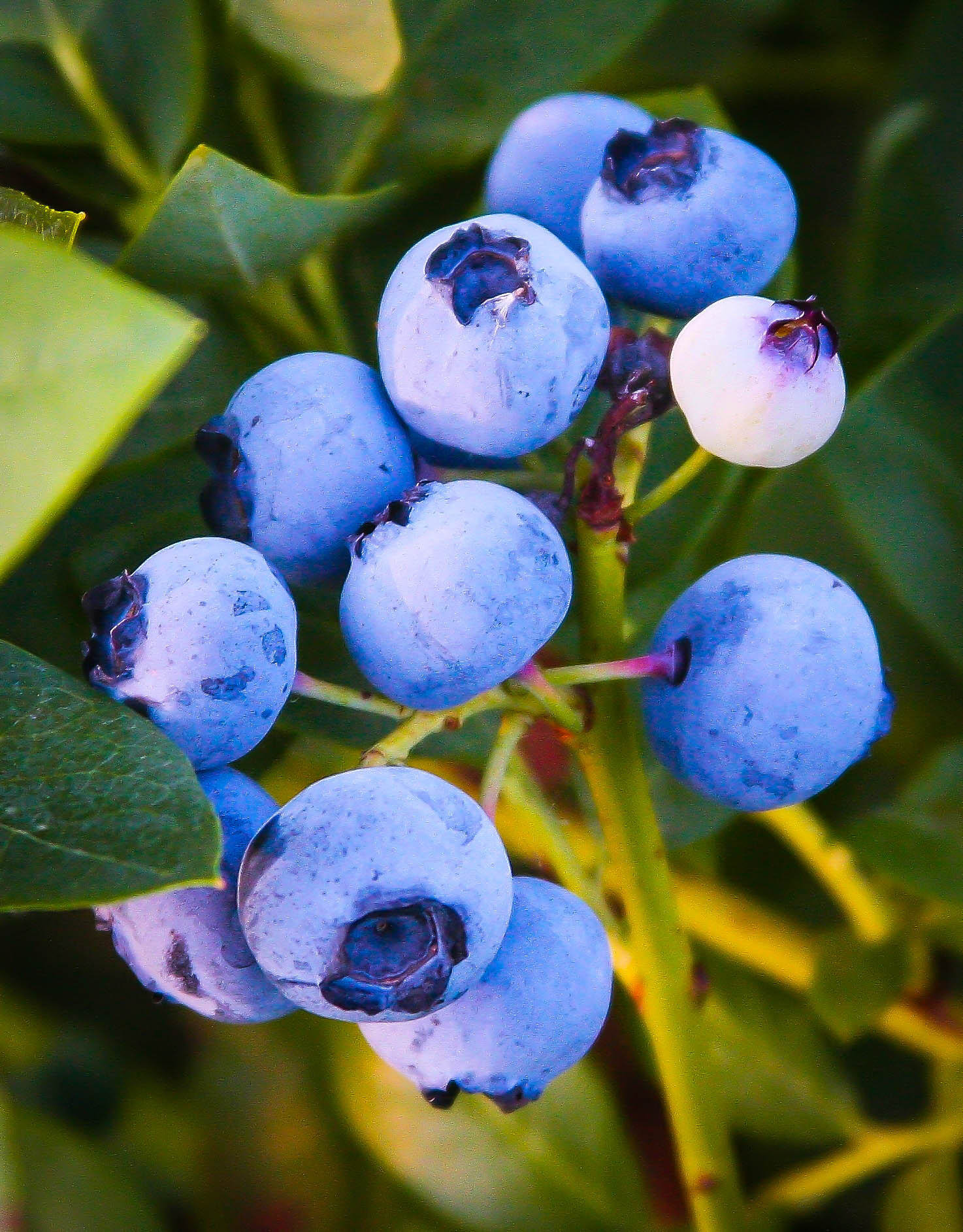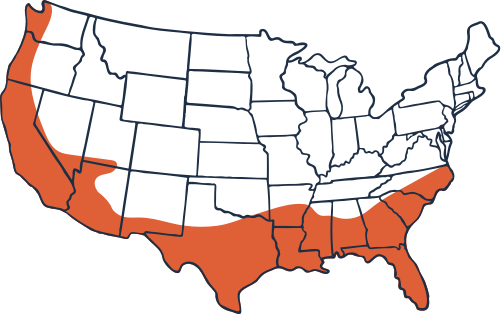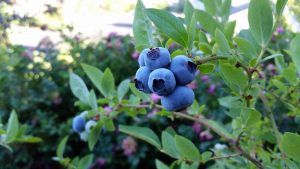Buy Emerald Blueberry Bushes Online
All tree, and nothin’ but the tree! We measure from the top of the soil to the top of the tree; the height of the container or the root system is never included in our measurements.
What is a gallon container?
Nursery containers come in a variety of different sizes, and old-school nursery slang has stuck. While the industry-standard terminology is to call the sizes “Gallon Containers”, that doesn’t exactly translate to the traditional liquid “gallon” size we think of. You’ll find we carry young 1-gallons, up to more mature 7-gallons ranging anywhere from 6 inches to 6ft.
How does the delivery process work?
All of our orders ship via FedEx Ground! Once your order is placed online, our magic elves get right to work picking, staging, boxing and shipping your trees. Orders typically ship out within 2 business days. You will receive email notifications along the way on the progress of your order, as well as tracking information to track your plants all the way to their new home!
Why are some states excluded from shipping?
The short & sweet answer is: “United States Department of Agriculture Restrictions.” Every state has their own unique USDA restrictions on which plants they allow to come into their state. While we wish we could serve everyone, it’s for the safety of native species and helps prevent the spread of invasive disease & pests. We’ve gotta protect good ole’ Mother Nature, after all.
About Me
The Emerald Blueberry is a specially developed form of the southern highbush blueberry, bred to grow well even in very warm areas like Florida and southern California. It needs very few hours of winter cold to grow well, unlike many other types of blueberry bushes. As well, it is vigorous, carrying a heavy crop of large, tasty berries that are bright blue. It will grow well for you in zones 8, 9 and 10, and the first berries can be ready in mid-April. The bushes grow to just 6 feet in height, so they fit well into a smaller garden, or into large planters. Delicious blueberries are best ripened on the bush, and now, even in hot areas, you can do this easily.
- Produces big, delicious berries in the hottest parts of the country
- Begin harvesting as early as mid-April
- Large, well-flavored berries of a rich blue
- Vigorous bushes that are easy to grow
- Needs very little winter cold – grows well in Florida
Grow your Emerald Blueberry in acid soil with a pH value below 6.0. If you don’t have this kind of soil, grow them in large pots or boxes, in soil blended for acid-loving plants. Plant in a sunny or partially-shaded spot, and water well at all times. These plants need moisture, but the soil must be well-drained. If necessary, plant on raised beds or low mounds of soil. Mulch with acid composts like peat-moss, pine needles, or grass clippings. Pests and diseases are usually not problems.
Plant Hardiness Zones 8-10
Mature Width 3-4
Mature Height 5-6
Sun Needs Full Sun
Although some blueberries grow well in warm areas, and the soil in places like Florida is ideal for them, many need longer periods of winter cold than happens in warm places. Now the Emerald Blueberry solves this issue, and it also delivers heavy crops of exceptionally large blueberries in places with just a few hours of cold weather all winter. As well, this vigorous plant grows quickly to a height of 6 feet tall, making a bush that is both easy to pick and that bears a big crop of delicious berries.
Blueberries are enormously popular, and it’s no wonder. These delicious berries are incredibly good for us, packed with vitamins, minerals, and powerful antioxidants that bring good health. They taste so good too – fresh from the bush, mixed in yogurt or fruit salad, and of course in pancakes and muffins. They make delicious pies and desserts, as well as tasty preserves. If you grow your own, there is never any waste or glut of fruit. Simply put surplus berries straight into the freezer without washing them, and they come out perfect months later.
Growing Emerald Blueberry Bushes
Once, the main limitation on growing blueberries was their need for many hours of low temperatures in winter, so that the buds mature and open naturally when warmer weather arrives in spring. This limited them to warm areas with cooler winters. Then plant breeders produced the Emerald Blueberry, Now, even if you live in a very warm area, you can grow this particular blueberry to perfection, and enjoy your own homegrown ripe fruit.
Hardiness and Climate
This variety grows well in zones 8, 9 and 10, so all across the southern parts of America, the Emerald Blueberry will grow for you. Even in southern Florida gardeners and growers are harvesting beautiful blueberries from bushes of this very special variety. This variety has ripe berries within 60 days of flowering, and in warm areas berries are ready to eat from mid-April to mid-May. The exact harvesting time will depend on where you live.
Soil Conditions
Blueberries are not hard to grow, but they do have some basic requirements. First is acid soil. If you don’t know the acid/lime balance of your soil you can test it in a few minutes with a simple kit from any garden center. Blueberries like soil with a pH value of between 4.0 and 5.5 or 6.0. If that is your soil, then they will be easy to grow in your garden.
If you have more alkaline soil, then the easiest way to succeed with blueberries is to grow them in boxes or containers, using a soil for acid-loving plants. The Emerald Blueberry is ideal for this, since it does not grow too tall, and it is fast-growing, so you will soon be picking berries. With it’s very large berries in tightly-packed bunches, just a bush or two will give you lots of fruit.
Watering
The second thing blueberries need is water. The soil should be moist but well-drained. If your soil is always wet and muddy, build it up into a low bed or mound, and plant on top of that. The water will always be available, but there will be drainage too. In ordinary gardens water regularly, especially during summer, and don’t let your plants dry out. In planters, water as soon as the top ½ inch is a little dry. Use a thick mulch of shredded pine bark, peat moss, leaves, pine needles or grass clippings over the roots of your Emerald Blueberry plants, to preserve moisture, inhibit weeds and add acidity to the soil. Fertilizer for acid-loving plants will help your bushes grow well, especially in the smaller soil volume of a box.
Care and Maintenance
After a few years of growth, start pruning your bushes in winter. Remove stems over 3 years old that are no longer fruiting well. Thin out younger stems if there are too many, to keep the plant open in form. This is all the regular care needed for these easily grown plants.
History and Origins of the Emerald Blueberry
To flower well, blueberries need hundreds of hours of lower temperatures during the winter. This meant that in southern Florida, southern California and other warm areas, they were difficult to grow. So scientists and plant breeders decided to tackle this problem. The result is the Emerald Blueberry, a complex hybrid plant based mainly on the northern highbush blueberry (Vaccinium corymbosum), bred with wild blueberries from the southeast, that need no chill, especially Vaccinium darrowi. It is one of a group of blueberries called Southern Highbush Blueberries.
The Emerald Blueberry was produced by Dr. Paul M. Lyrene in a breeding program in Gainsville, with the University of Florida. A seedling was found in 1991 which had outstanding vigor and large, firm, well-flavored fruit. Most important of all, it grew well with very few cold hours – around 250 hours in winter below 45 degrees, which happens even in southern Florida. So unique is this plant, it was patented in 2001 and released to growers by the Florida Agricultural Experiment Station. Our plants are produced under license, and are exact copies, via stem pieces, of the original seedling selected by Dr. Lyrene from among thousands.
Plants of this quality are always in high demand, so our stock will not be available for long. You may also want to consider growing other popular varieties, like the Powder Blue Blueberry Bush.
Read more:







